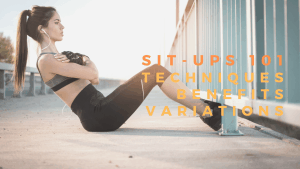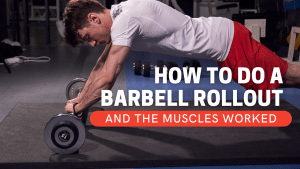How to do an abdominal hip thrust exercise
Most people, if not all, desire to have toned abs and buns of steel. Men and women alike do various workout routines and undergo strict diets just to achieve them. And while there are plenty of exercises that you can do to reach those goals, what better way to achieve both at the same time than abdominal hip thrusts?
What is an abdominal hip thrust?
Basically, an abdominal hip thrust is an exercise that targets the core and the gluteal muscles, both of which are responsible for moving and stabilizing the body.
To get started, do these steps and start incorporating abdominal hip thrusts to your workout routine:
- Lay on your back flat on a bench.
- Put your hands behind your head and hold on to the bench.
- Slowly lift both your legs to a 90-degree angle.
- Bring your hips and buttocks upward using your core strength. Make sure you breathe out as you thrust.
- Slowly lower your hips and buttocks back to the bench.
- Do two sets of ten repetitions at the minimum and gradually increase your number of sets and repetitions as you go along.
The good thing about abdominal hip thrusts is that it is a simple exercise that is just as effective as other more vigorous routines out there targeting the core and the glutes. There is also no need for a high degree of preparation to get your body ready for this exercise—just do your regular cardio exercises and some basic stretches before getting started and you are all set.
Making abdominal hip thrusts more challenging
Since abdominal hip thrusts are relatively easy, it can be ideal for people who are just starting out on their fitness journey. But if you have been working out for quite some time and your body is already used to strenuous routines, there are a few ways to make abdominal hip thrusts a bit more challenging.
Adding weights
One variation you can do with this exercise is the addition of light weights, like dumbbells, for increased intensity. This will not only build up the workload of your glutes and leg muscles, but it will make your lower core and lower back muscles work harder as well.
Before you start, put the dumbbell vertically on the ground and make sure to lock it securely with your feet. Once you are done with this, you can now proceed with the exercise. Just be more mindful of the additional weight and avoid bringing the dumbbell over your head. You wouldn’t want to get ripped abs and tight booty but break your face in the process, would you?
Holding the thrust
Another way you can make this exercise a bit more intense is by holding the position before lowering your hips and buttocks back to the bench. Holding the thrust for at least three seconds instead of immediately going back to your initial position tenses the glutes and leg muscles and forces them to double their effort.
This will also slightly increase the workload of your core, arms, and the upper part of your body since it will briefly provide support for you while your hips, buttocks, and legs are up in the air for three seconds.
Taking the intensity to another level
If those variations are still not challenging enough for you, you can try adding weights and holding the thrust at the same time. This ensures that all relevant muscle groups in your lower abdominal area, lower back, glutes, and legs are working at their fullest capacity for optimal results.
What if I don’t have a bench?
Ideally, an abdominal hip thrust has to be done on a bench. But of course, not everyone has a bench at home or would always be in the mood to go to the gym and use a bench there, and that is perfectly understandable.
Worry not because you can definitely do abdominal hip thrusts from the comfort of your home without a bench! The steps are pretty much the same—you just need to find a yoga or exercise mat, place it on the ground, lay down on it, and start thrusting away.
The only difference would be where you put your arms. Since there is no bench to hold on to, you will have to place your arms flat on the ground and put your hands—palms facing down—under your hips and buttocks to provide a bit of elevation. This is where you will get the support as you lift your hips and buttocks up in the air.
Why you should take your core and glutes seriously
While having that six-pack and peachy booty is absolutely great, there is more to your core and glutes than just making them look good. Regardless if you are a newbie in exercising and your goal is to achieve defined abs and a perky butt, or if you are someone who has been training for a long time and want to build your strength and endurance, in general. exercising your core and glutes has great benefits for your overall well-being.
The power of your core
You may think that taking a shower, dressing up, putting on shoes, picking up something from the floor, or even just turning around when someone calls your name does not require much effort, but the reality is that your core is at work even in these simple actions.
The core connects the upper and lower part of the body and is in charge of providing balance by coordinating all adjoining muscles and making sure they are synchronized and working with each other in harmony. If the core is weak, the body’s ability to move will be greatly affected, which is why it is important to exercise the core muscles to strengthen them so they can keep doing their job well.
There are still plenty of misconceptions about what the core really is, even amongst professionals. It is not just the abdominals, or what most people know as the six-pack, because there are also other muscles that make up the core. These include muscles that steady the hips, muscles that secure the shoulders, and muscles that form the torso.
So if you think of the core this way, you will realize that it is more than just a part of your body that has to be flaunted. Activities that require your body to bend, rotate, or move sideways—basically almost every movement—heavily rely on the core, and you may take these things for granted at the moment, but if the time comes when even the most basic things become too difficult to do, you will wish you had done more to strengthen your core.
The power of your glutes
Gluteal muscles, or glutes, are another muscle group that many people still focus on mostly for superficial reasons, but they are not considered the strongest muscles in the body for nothing.
The glutes are made up of three major muscles: the gluteus minimus, gluteus medius, and gluteus maximus. The most common among them is the gluteus maximus which is the muscle that gives the butt its shape, but the two others are just as important. Not only are glutes the strongest, but they are also the largest muscle group and together, these muscles work as a team to balance the pelvis and ensure correct hip movements.
Without strong glutes, any physical activity that involves the lower extremities will be difficult, which is why it is important to train your glutes for improved flexibility, mobility, and better overall performance. Who doesn’t want to ease the burden of climbing stairs or persistent back pain off of them, right?
The power of two
Now that the importance of strengthening your core and glutes is established, it is easier to see why exercises that target them, such as abdominal hip thrusts, are necessary.
Since the core and gluteal muscles work hand in hand and are hugely responsible for our day-to-day movements, consistently training them can guarantee that going about our usual daily tasks—even the most mundane ones—would be a breeze.
Once you start doing abdominal hip thrusts, you will not only see the results after being consistent with the exercise. More importantly, you will also feel the significant change in your body. You will be stronger, have increased stamina, improved endurance, and better posture. Not to mention, you will be less prone to other exercise-related injuries and you can now be more explosive with your workouts.
The benefits are endless and your body will have many things to be thankful for in the long run. Why choose between having good-looking abs and butt and having strong core and glutes when you can have both with abdominal hip thrusts? It doesn’t have to be a choice. You just need to be consistent in doing this exercise to maintain the good things that will happen to your body. Once you have achieved both, you gotta keep both.



